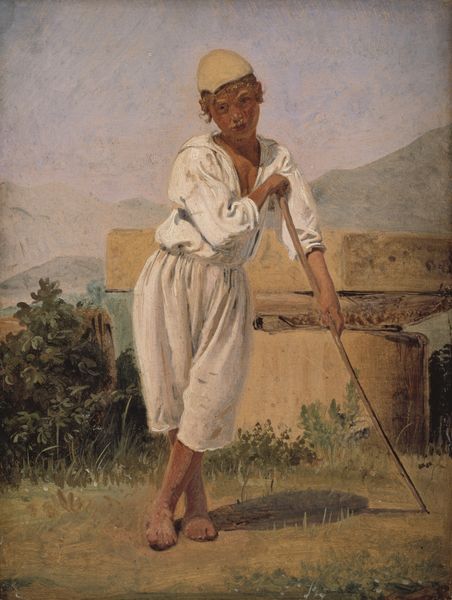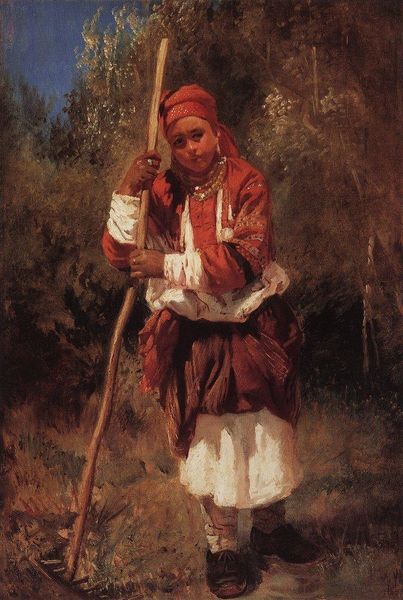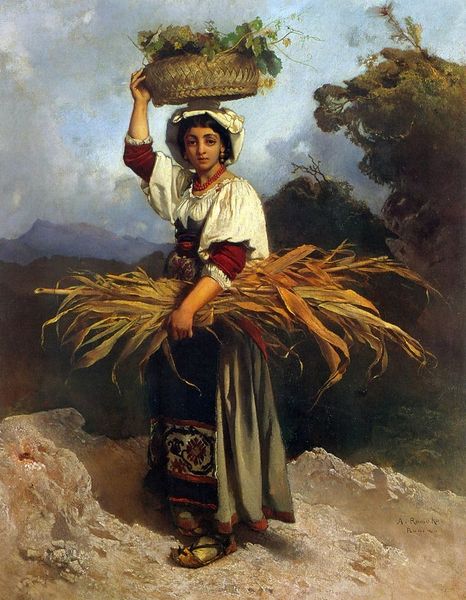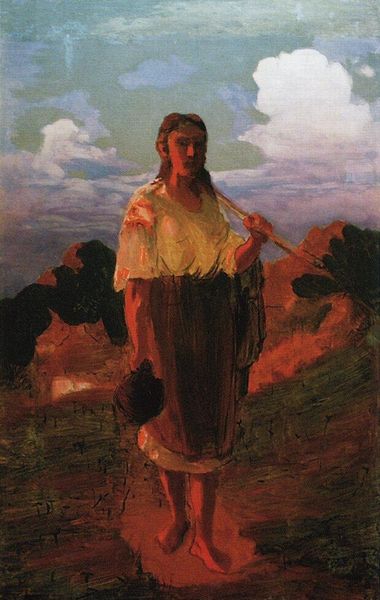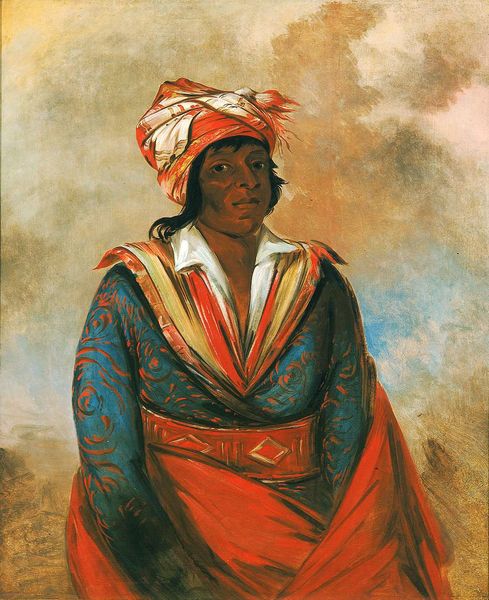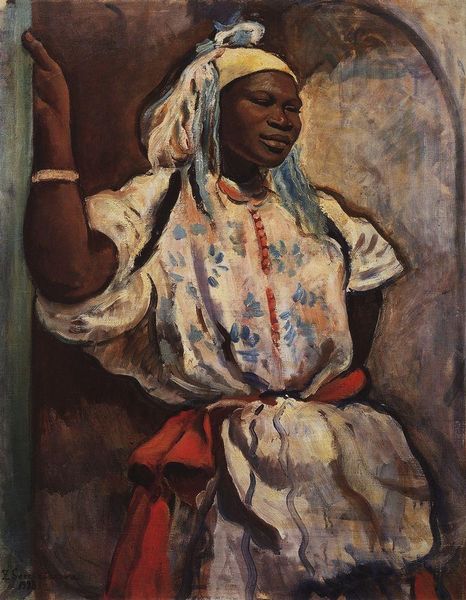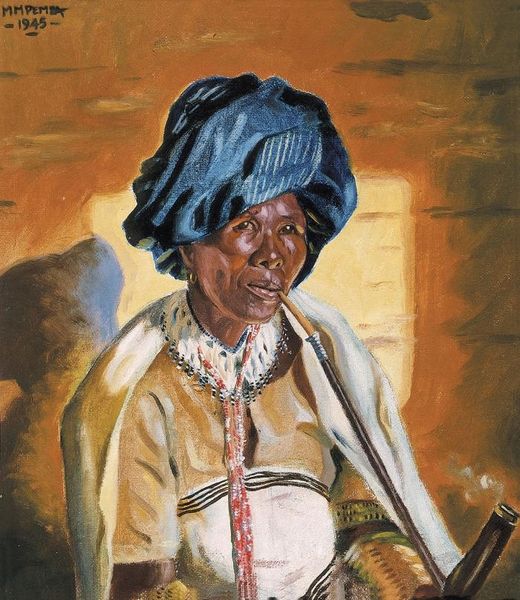
Woman Carrying a Pitcher on Her Head 1855
0:00
0:00
camillepissarro
E.G. Bührle Foundation, Zürich, Switzerland
painting, oil-paint
#
portrait
#
16_19th-century
#
painting
#
oil-paint
#
landscape
#
oil painting
#
genre-painting
#
portrait art
#
realism
Copyright: Public domain
Curator: Standing before us is Camille Pissarro's "Woman Carrying a Pitcher on Her Head," painted around 1855. Editor: My first impression is of stark simplicity; the woman’s figure is solid, monumental against the pale, almost bleached landscape. The palette seems very limited. Curator: Indeed, Pissarro has focused on capturing the essence of the figure within its setting through simplified forms and a restrained color scheme. Notice how the lines of her body echo the gentle curves of the hillside behind her. The composition divides neatly into zones, earth below, sky above. Editor: The rough brushstrokes give an immediacy, as though we’ve caught her mid-stride. It's not romanticized. I'm curious about the material reality – what was the societal role of the people carrying these large loads, and where exactly did Pissarro encounter this scene? This must have been a physically taxing activity; what sort of access did the artist have that gave him the opportunity to paint this. Curator: The very act of painting is critical to the image here; the materiality of the paint on the canvas contributes to this effect. It is neither entirely illusionistic, nor entirely abstract. I am reminded of certain Post-Impressionist conventions and theories of pictorial space. Editor: But looking closely at how that clay pot was created by hand, what does that say about the traditions and craft knowledge involved? Pissarro gives it the same level of detail and brushstrokes that he employs in the figure and the landscape: an egalitarian representation. The background figures feel distant and anonymous while all our focus goes on this main subject. Curator: Pissarro certainly eschews traditional hierarchy within genre paintings and achieves a delicate balance and compositional tension throughout, achieved via diagonals cutting across compositional balance. The realism with which he depicts this subject offers visual delight alongside thoughtful commentary on structure and composition. Editor: Yes, that’s a great observation. Thinking about the clay and the cloth used, everything feels intimately linked to labor, and to necessity, speaking of the lives that relied on the utility of simple objects. Pissarro found an important intersection there in a work that balances labor and materials. Curator: Thinking of structure, it would also have had an emotional appeal because of how his eye chose the line of the silhouette to be the center, and then the balance. It really is all there, waiting for an audience to receive the effect and find a point of entrance and pleasure within the frame. Editor: I found myself looking deeper into how we engage with images and materials to reveal complex dimensions and create these different angles through which art may function. Thank you.
Comments
No comments
Be the first to comment and join the conversation on the ultimate creative platform.
